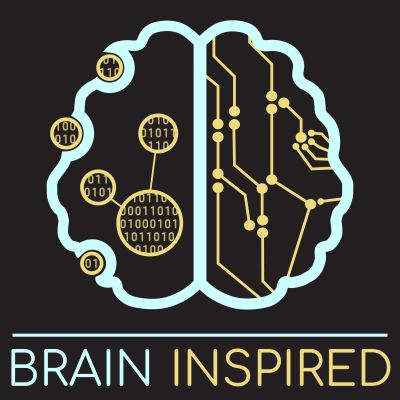Neuroscience and artificial intelligence work better together. Brain inspired is a celebration and exploration of the ideas driving our progress to understand intelligence. I interview experts about their work at the interface of neuroscience, artificial intelligence, cognitive science, philosophy, psychology, and more: the symbiosis of these overlapping fields, how they inform each other, where they differ, what the past brought us, and what the future brings. Topics include computational neuroscience, supervised machine learning, unsupervised learning, reinforcement learning, deep learning, convolutional and recurrent neural networks, decision-making science, AI agents, backpropagation, credit assignment, neuroengineering, neuromorphics, emergence, philosophy of mind, consciousness, general AI, spiking neural networks, data science, and a lot more. The podcast is not produced for a general audience. Instead, it aims to educate, challenge, inspire, and hopefully entertain those interested in learning more about neuroscience and AI.
https://braininspired.co/series/brain-inspired/
BI 173 Justin Wood: Origins of Visual Intelligence
Support the show to get full episodes and join the Discord community.
In the intro, I mention the Bernstein conference workshop I'll participate in, called How can machine learning be used to generate insights and theories in neuroscience?. Follow that link to learn more, and register for the conference here. Hope to see you there in late September in Berlin!
Justin Wood runs the Wood Lab at Indiana University, and his lab's tagline is "building newborn minds in virtual worlds." In this episode, we discuss his work comparing the visual cognition of newborn chicks and AI models. He uses a controlled-rearing technique with natural chicks, whereby the chicks are raised from birth in completely controlled visual environments. That way, Justin can present designed visual stimuli to test what kinds of visual abilities chicks have or can immediately learn. Then he can building models and AI agents that are trained on the same data as the newborn chicks. The goal is to use the models to better understand natural visual intelligence, and use what we know about natural visual intelligence to help build systems that better emulate biological organisms. We discuss some of the visual abilities of the chicks and what he's found using convolutional neural networks. Beyond vision, we discuss his work studying the development of collective behavior, which compares chicks to a model that uses CNNs, reinforcement learning, and an intrinsic curiosity reward function. All of this informs the age-old nature (nativist) vs. nurture (empiricist) debates, which Justin believes should give way to embrace both nature and nurture.
- Wood lab.
- Related papers:
- Controlled-rearing studies of newborn chicks and deep neural networks.
- Development of collective behavior in newborn artificial agents.
- A newborn embodied Turing test for view-invariant object recognition.
- Justin mentions these papers:
- Untangling invariant object recognition (Dicarlo & Cox 2007)
0:00 - Intro 5:39 - Origins of Justin's current research 11:17 - Controlled rearing approach 21:52 - Comparing newborns and AI models 24:11 - Nativism vs. empiricism 28:15 - CNNs and early visual cognition 29:35 - Smoothness and slowness 50:05 - Early biological development 53:27 - Naturalistic vs. highly controlled 56:30 - Collective behavior in animals and machines 1:02:34 - Curiosity and critical periods 1:09:05 - Controlled rearing vs. other developmental studies 1:13:25 - Breaking natural rules 1:16:33 - Deep RL collective behavior 1:23:16 - Bottom-up and top-down
